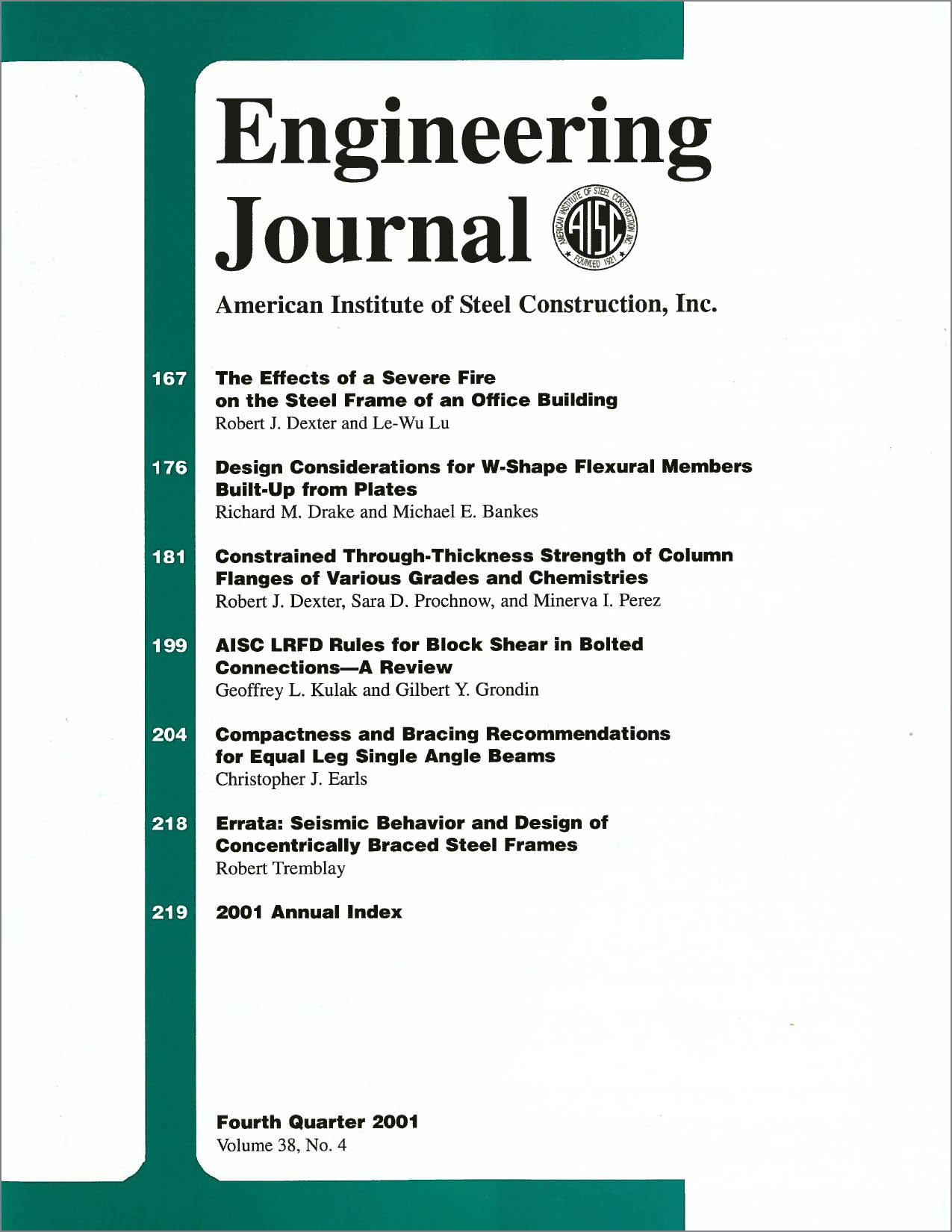Constrained Through-Thickness Strength of Column Flanges of Various Grades and Chemistries
DOI:
https://doi.org/10.62913/engj.v38i4.764Abstract
Tee-joint specimens were fabricated with high-strength "pull" plates welded transversely to opposite flanges of short lengths of heavy column shapes to determine strength, deformation, and fracture behavior of the flanges of wideflange column shapes when loaded in the through-thickness direction. Forty-seven specimens were tested, including wide-flange shapes obtained from four steel mills from 1995 to 2000 conforming to specifications A572 Gr. 50, A992, and A913 Gr. 50 and 65. Sulfur levels ranged from 0.003 to 0.043 percent and Carbon from 0.05 to 0.20 percent, up to the limits of the current specifications. Several shapes with especially high sulfur were specially produced for this research. The through-thickness strength of the column flanges tested exceeded the 690 MPa (100 ksi) yield strength of the pull plates, well above any possible demand that could come from Gr. 50 beam flanges.

